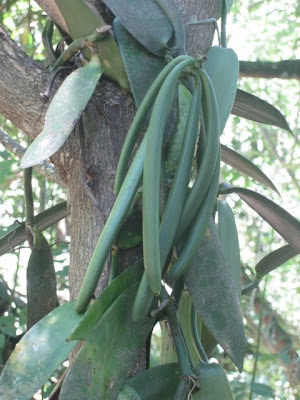Saturday, March 29, 2008
Zanzibar, Tanzania (March 24-27, 2008)
Situated in the warm Indian Ocean off the coast of Tanzania, Zanzibar Island is the largest island in the Zanzibar Archipelago - also known as the Spice Islands. The archipelago has a rich history dating back to the beginning of the first millenium, when settlers from mainland Africa arrived. By the 1st century, Arabic traders had established settlements, and by the 8th century, Shirazi traders from Persia had also staked a claim to the land.
Because of its convenient location, the islands became a bustling trade center between Africa, India, Asia and the Middle East. After centuries of Portuguese, Omani and British control, Zanzibar declared independence in the 1960s and joined with the mainland country of Tanganyika to form what is today called Tanzania.
Stone Town, the historic old town in Zanzibar's main port, is a fascinating jumble of Arabic, Indian and African people, cultures and architectural styles. The dark maze of narrow streets bustles with activity and echoes with the sounds of prayers and bicycle horns. It's impossible not to get lost amongst the winding alleyways filled with mosques, craft vendors, men sipping tea, women selling fruit, and children playing.
In contrast, Zanzibar's beaches are as tranquil as Stone Town is lively: warm turquoise water gently laps against white powdery sand dotted with shells. Tropical fish, dolphins and sea turtles swim off the coast of nearby islands, and dhows (traditional boats) glide across the water with sails billowing.
 Boats gather near the port at Stone Town
Boats gather near the port at Stone Town
 Bicycling bread vendors prepare for business at the massive Stone Town market
Bicycling bread vendors prepare for business at the massive Stone Town market
 One of the many beautiful, intricately carved doors that can be found throughout Stone Town
One of the many beautiful, intricately carved doors that can be found throughout Stone Town
Because of its convenient location, the islands became a bustling trade center between Africa, India, Asia and the Middle East. After centuries of Portuguese, Omani and British control, Zanzibar declared independence in the 1960s and joined with the mainland country of Tanganyika to form what is today called Tanzania.
Stone Town, the historic old town in Zanzibar's main port, is a fascinating jumble of Arabic, Indian and African people, cultures and architectural styles. The dark maze of narrow streets bustles with activity and echoes with the sounds of prayers and bicycle horns. It's impossible not to get lost amongst the winding alleyways filled with mosques, craft vendors, men sipping tea, women selling fruit, and children playing.
In contrast, Zanzibar's beaches are as tranquil as Stone Town is lively: warm turquoise water gently laps against white powdery sand dotted with shells. Tropical fish, dolphins and sea turtles swim off the coast of nearby islands, and dhows (traditional boats) glide across the water with sails billowing.
 Boats gather near the port at Stone Town
Boats gather near the port at Stone Town Bicycling bread vendors prepare for business at the massive Stone Town market
Bicycling bread vendors prepare for business at the massive Stone Town market One of the many beautiful, intricately carved doors that can be found throughout Stone Town
One of the many beautiful, intricately carved doors that can be found throughout Stone TownBlue and green shutters open onto a narrow Stone Town alley
Thursday, March 27, 2008
Wednesday, March 26, 2008
Scenes from the Road, Tanzania (March 22-23, 2008)
We spent the better part of two days driving from Lake Malawi over the border to Tanzania and east to Dar es Salaam. Both the scenery and the weather varied greatly over the two days, but all of it was beautiful:
 Rice fields just over the Tanzanian border
Rice fields just over the Tanzanian border Tea plantations as far as the eye can see
Tea plantations as far as the eye can see Hillside farms with plenty of terraces
Hillside farms with plenty of terraces A cloudy mountain pass
A cloudy mountain pass A huge baobab tree on the side of the road. Legend has it that if you can fit your arms around the trunk of a baobab tree, you will have good fortune for life!
A huge baobab tree on the side of the road. Legend has it that if you can fit your arms around the trunk of a baobab tree, you will have good fortune for life!Scenes from the Road, Malawi (March 18-22, 2008)
 A rubber tree plantation - note the small cup attached to the tree to collect the sap. In the streets near the plantation, boys sold handmade rubber balls that were very bouncy but also very stinky
A rubber tree plantation - note the small cup attached to the tree to collect the sap. In the streets near the plantation, boys sold handmade rubber balls that were very bouncy but also very stinky A woman sells bananas on the side of the road
A woman sells bananas on the side of the road The green hills of Malawi, with banana trees in the foreground
The green hills of Malawi, with banana trees in the foreground A boy waves from the window of his hut in this small hillside village
A boy waves from the window of his hut in this small hillside village A beautiful roadside waterfall
A beautiful roadside waterfallMarket Scenes, Malawi (March 21, 2008)
Markets are some of my favorite places to explore and take photos - they buzz with energy, and every corner brings new sights, sounds and smells. This market in Malawi had stalls for clothing, fabric, electronics, plastic buckets, couches, hardware, rope, burlap sacks, and an amazing (and sometimes quite pungent) assortment of food:
 A view down one of the clothing and home products "aisles" of the market
A view down one of the clothing and home products "aisles" of the market A woman sells rice in the food section of the market
A woman sells rice in the food section of the market All sorts of beans and grains for sale
All sorts of beans and grains for sale Eggs and oil for sale - I like how they package the oil in small plastic bags in addition to the full bottles.
Eggs and oil for sale - I like how they package the oil in small plastic bags in addition to the full bottles. Lots and lots of very smelly fish!
Lots and lots of very smelly fish!Photos of Craftsmen, Malawi (March 19-22, 2008)
Malawi is known for its beautiful handcarved wooden items, including intricately designed chairs, tables and home decorations. I passed countless roadside markets where artists proudly displayed their wares alongside their workshops:
 A woodworker carves one side of a picture frame (see the photo below for an example of a finished frame)
A woodworker carves one side of a picture frame (see the photo below for an example of a finished frame) Finished picture frames, along with bowls, boxes and carved animals
Finished picture frames, along with bowls, boxes and carved animals Another woodworker, carving an intricate chair back (see the photo below for an example of a finished chair)
Another woodworker, carving an intricate chair back (see the photo below for an example of a finished chair) The artist, taking a seat on one of his creations
The artist, taking a seat on one of his creations In addition to wooden items, Malawi markets also had lots of woven basket, mats and hats for sale
In addition to wooden items, Malawi markets also had lots of woven basket, mats and hats for sale
Lake Malawi, Malawi (March 18-22, 2008)
Lake Malawi is a massive (500+km long) lake that spans the eastern border of Malawi, separating it from Mozambique and Tanzania. The lake is the third largest in Africa and the ninth largest in the world, and it's home to approximately 500 species of fish. As a result, it's a prime destination for both snorkeling and freshwater diving, as well as general beachside relaxing.
We spent four days along various sections of the lakeshore, and it was interesting to see how much the landscape changed as we traveled north - from wild and windswept, to sunny and semitropical, to jungly and mountainous. At times, it was easy to forget that we were on a lake: I never could see across to the other side, and the waves were actually larger than those in the Indian Ocean off the coast of Zanzibar!
 The beach is my favorite place to camp: BBQ and roasted marshmallows over a bonfire, and the sound of the waves to lull me to sleep
The beach is my favorite place to camp: BBQ and roasted marshmallows over a bonfire, and the sound of the waves to lull me to sleep Three boys enjoy a sunny stroll along the beach
Three boys enjoy a sunny stroll along the beach
 A fisherman pulls in his catch at sunset
A fisherman pulls in his catch at sunset
 Green mountaintop views along the northwestern coast of Lake Malawi
Green mountaintop views along the northwestern coast of Lake Malawi
 Two boys pose for a photo on the beach
Two boys pose for a photo on the beach
We spent four days along various sections of the lakeshore, and it was interesting to see how much the landscape changed as we traveled north - from wild and windswept, to sunny and semitropical, to jungly and mountainous. At times, it was easy to forget that we were on a lake: I never could see across to the other side, and the waves were actually larger than those in the Indian Ocean off the coast of Zanzibar!
 The beach is my favorite place to camp: BBQ and roasted marshmallows over a bonfire, and the sound of the waves to lull me to sleep
The beach is my favorite place to camp: BBQ and roasted marshmallows over a bonfire, and the sound of the waves to lull me to sleep Three boys enjoy a sunny stroll along the beach
Three boys enjoy a sunny stroll along the beach A fisherman pulls in his catch at sunset
A fisherman pulls in his catch at sunset Green mountaintop views along the northwestern coast of Lake Malawi
Green mountaintop views along the northwestern coast of Lake Malawi Two boys pose for a photo on the beach
Two boys pose for a photo on the beach 

























